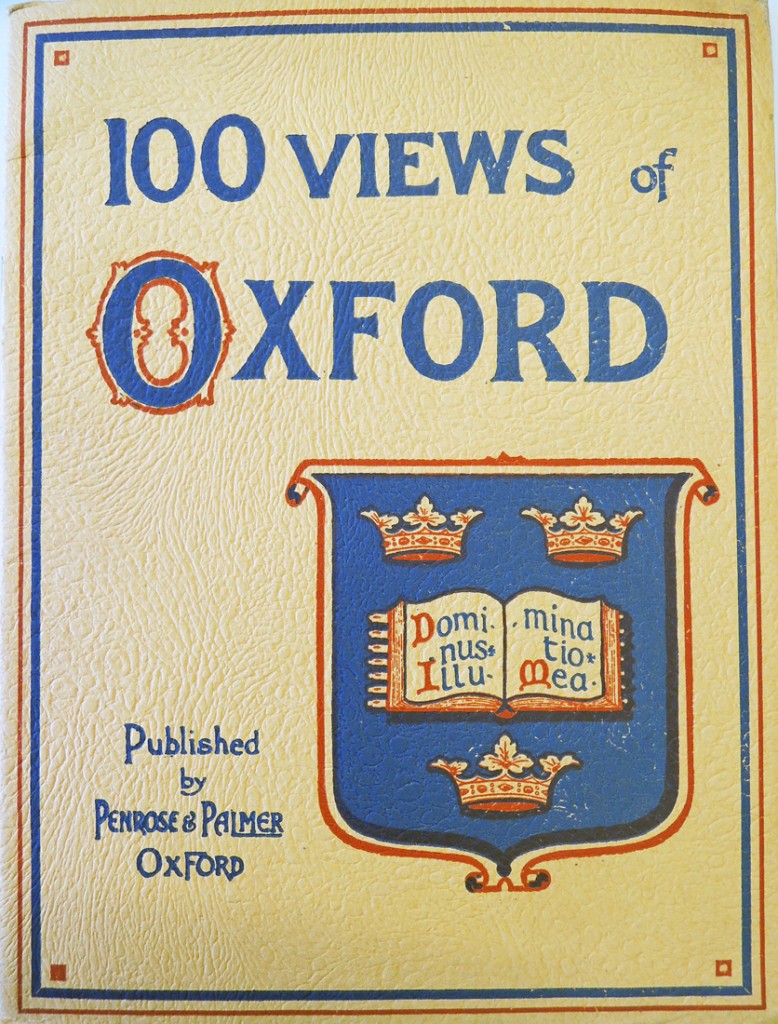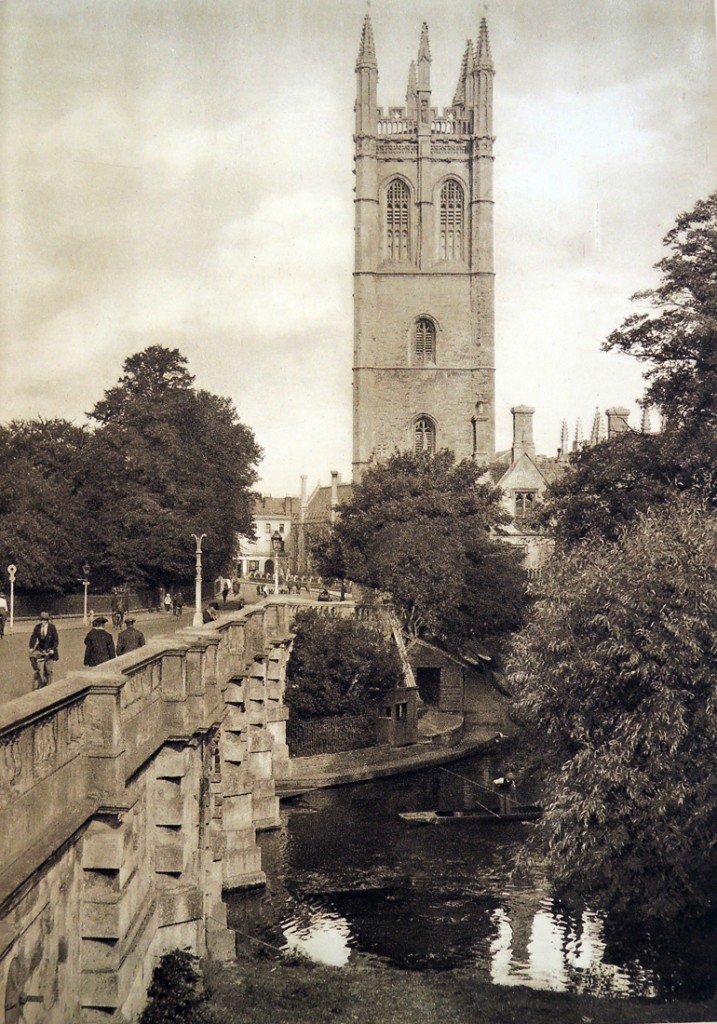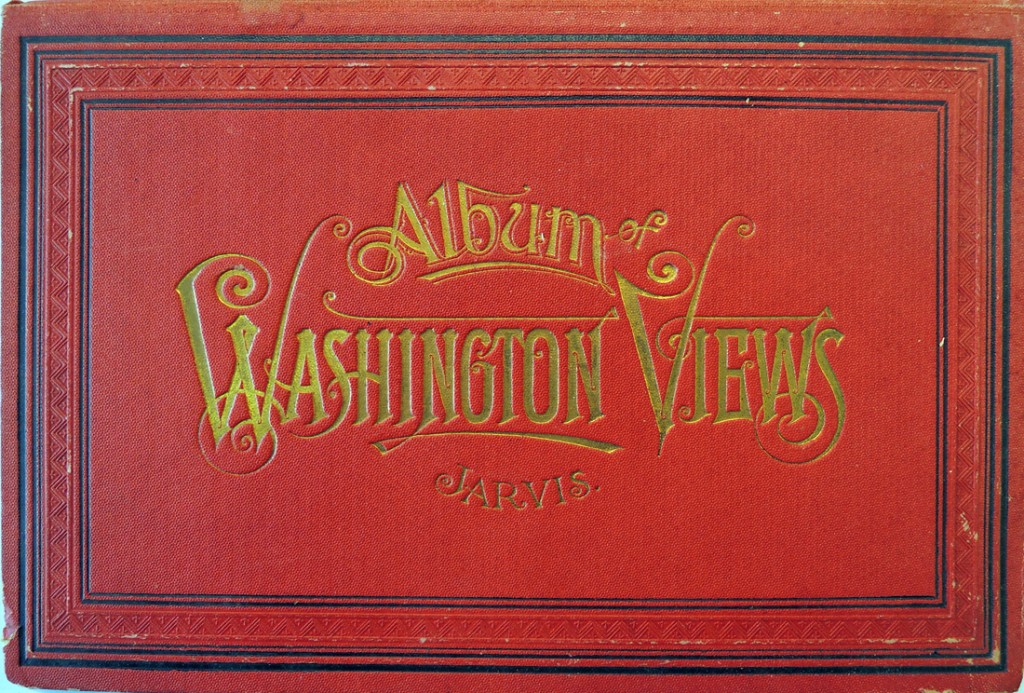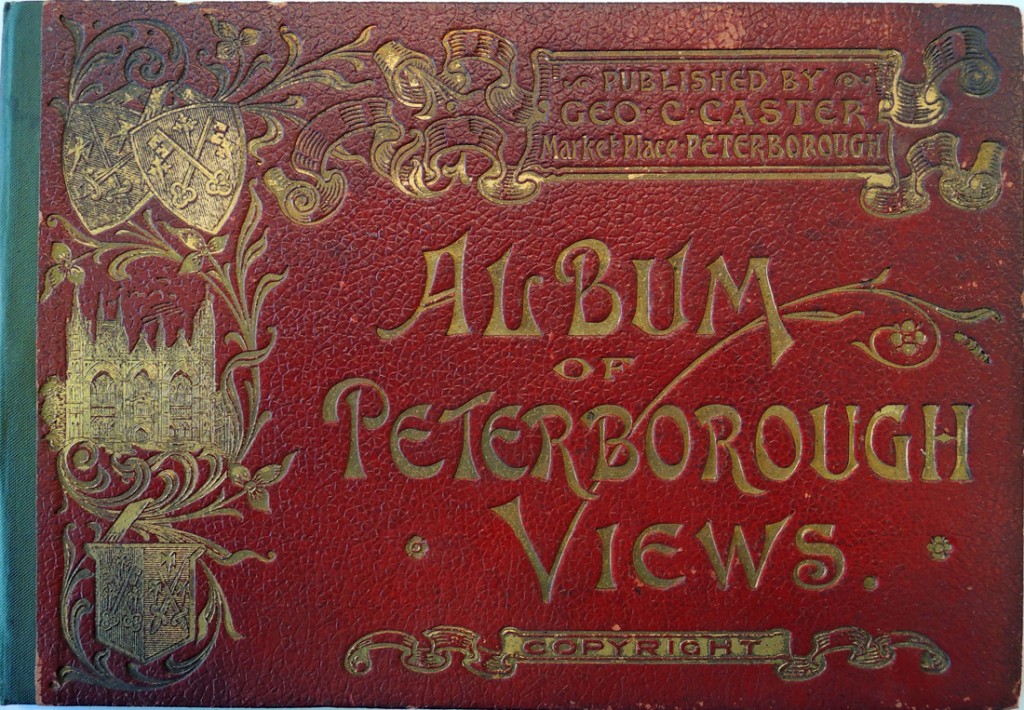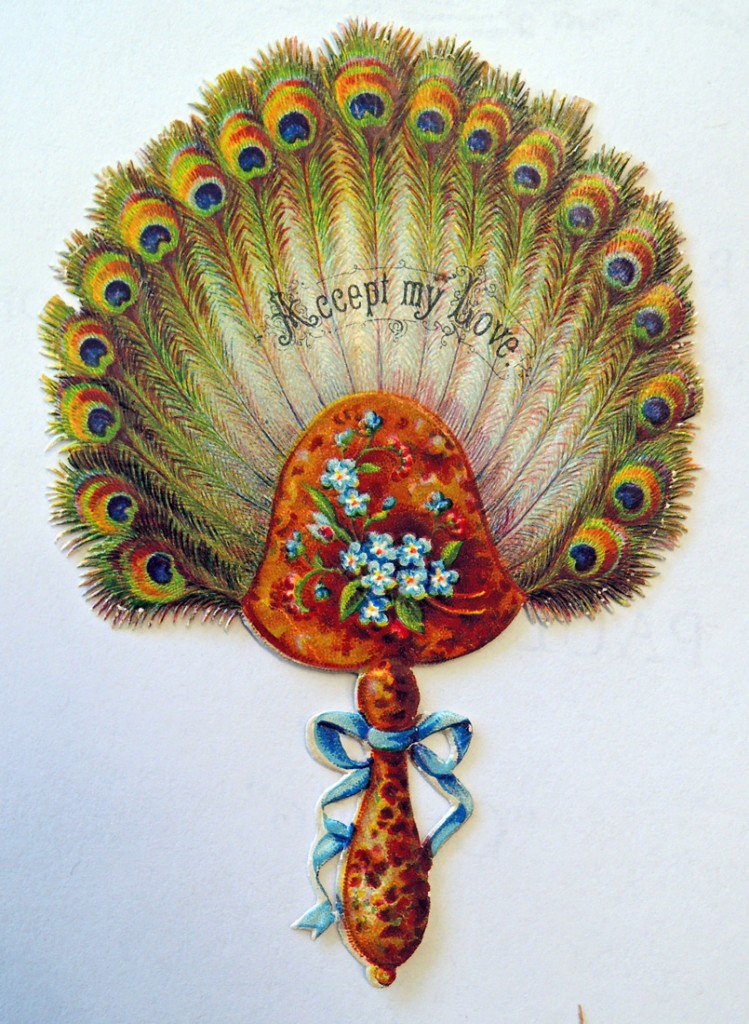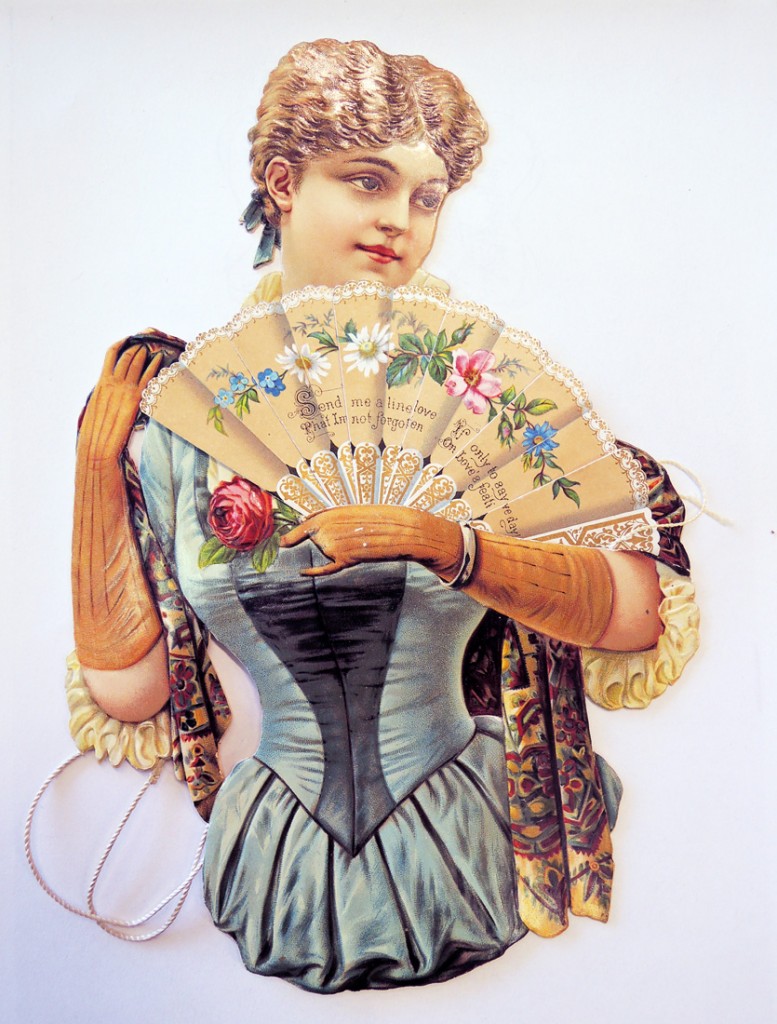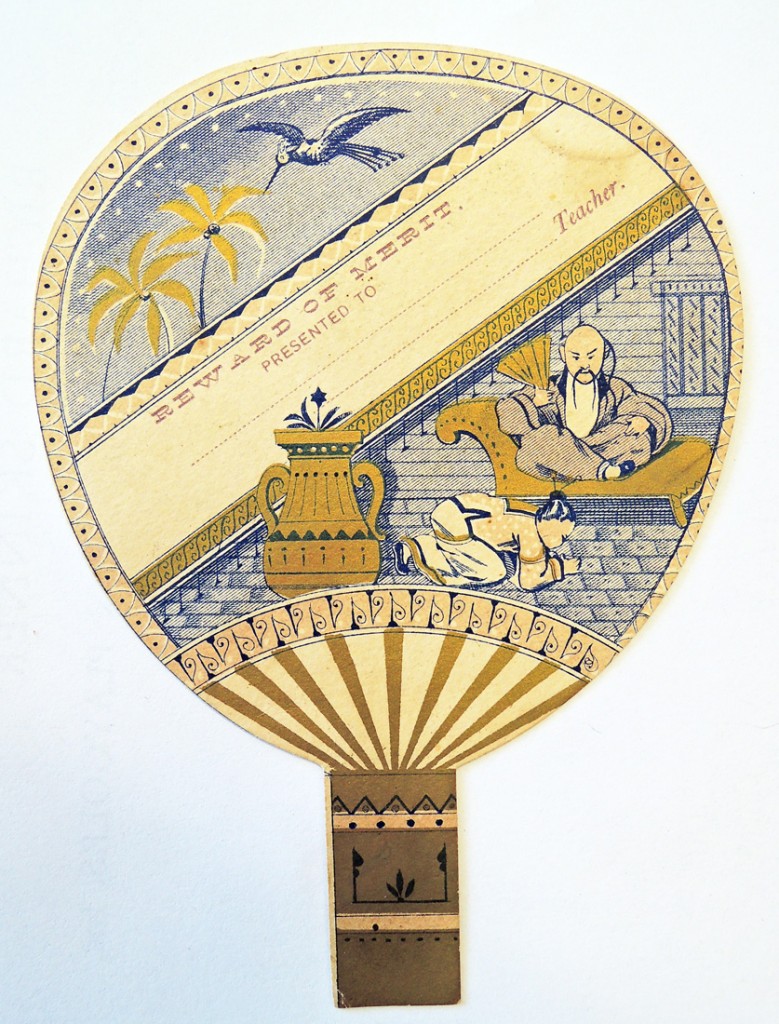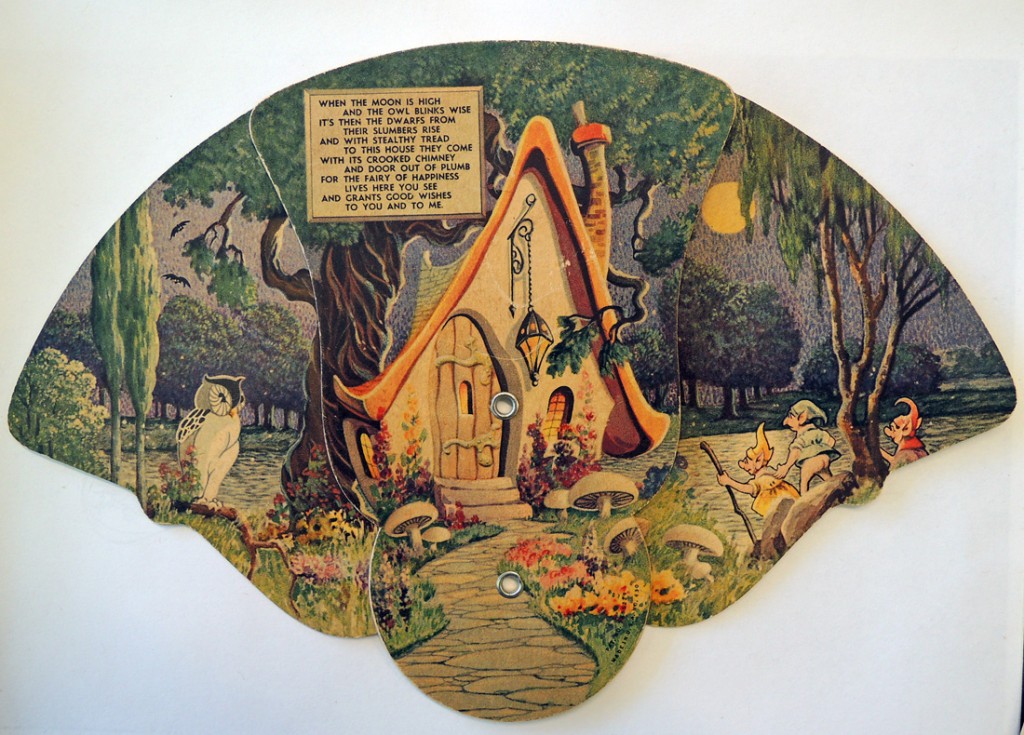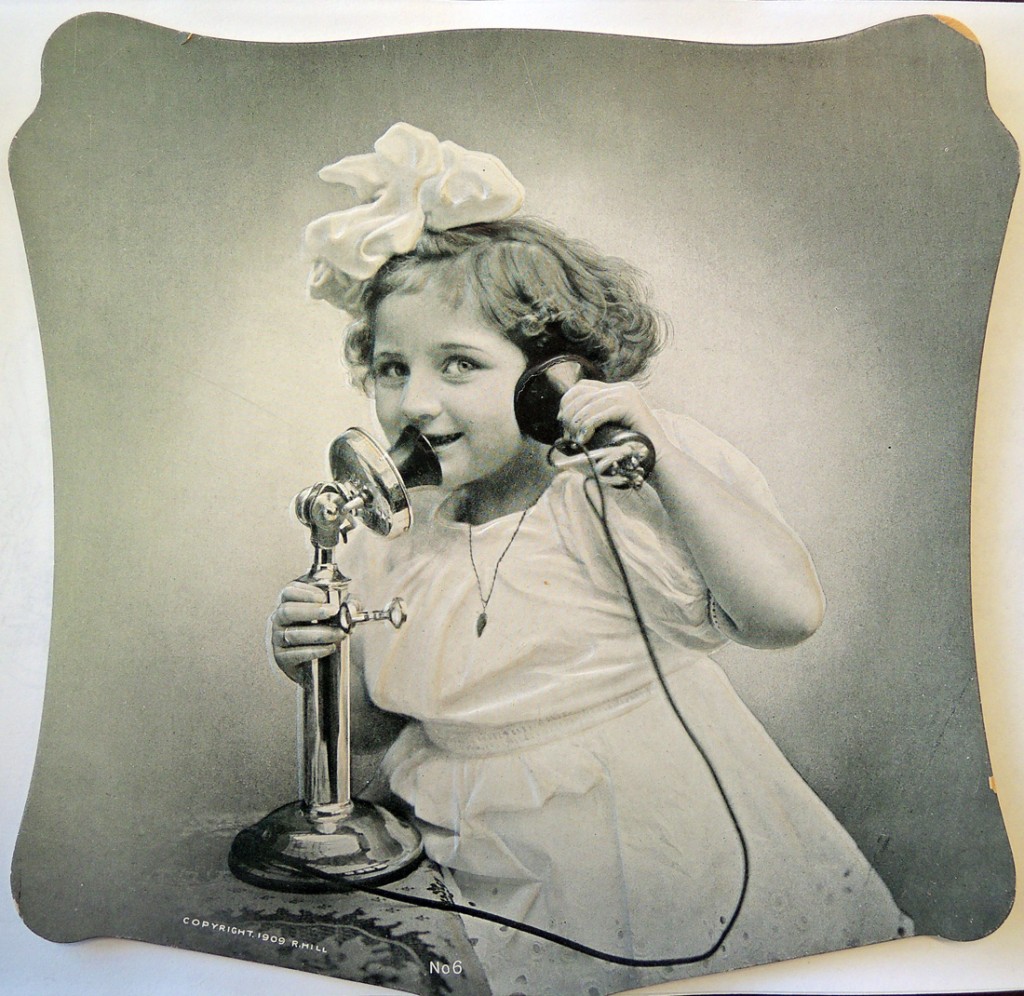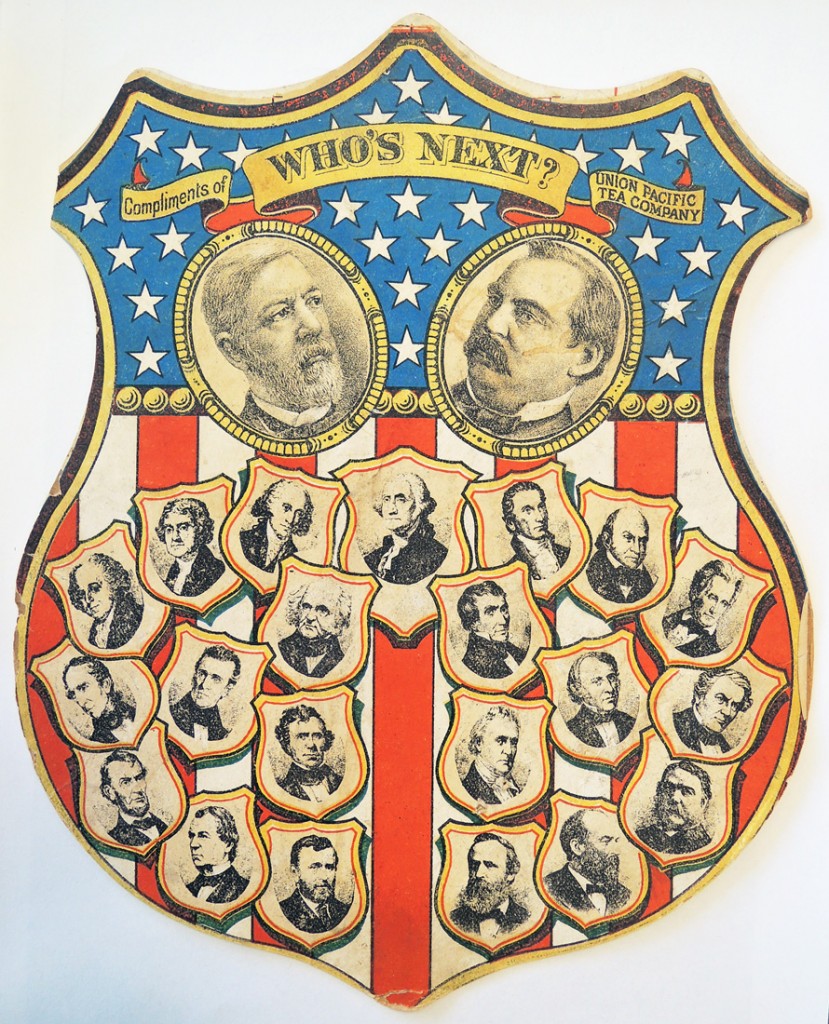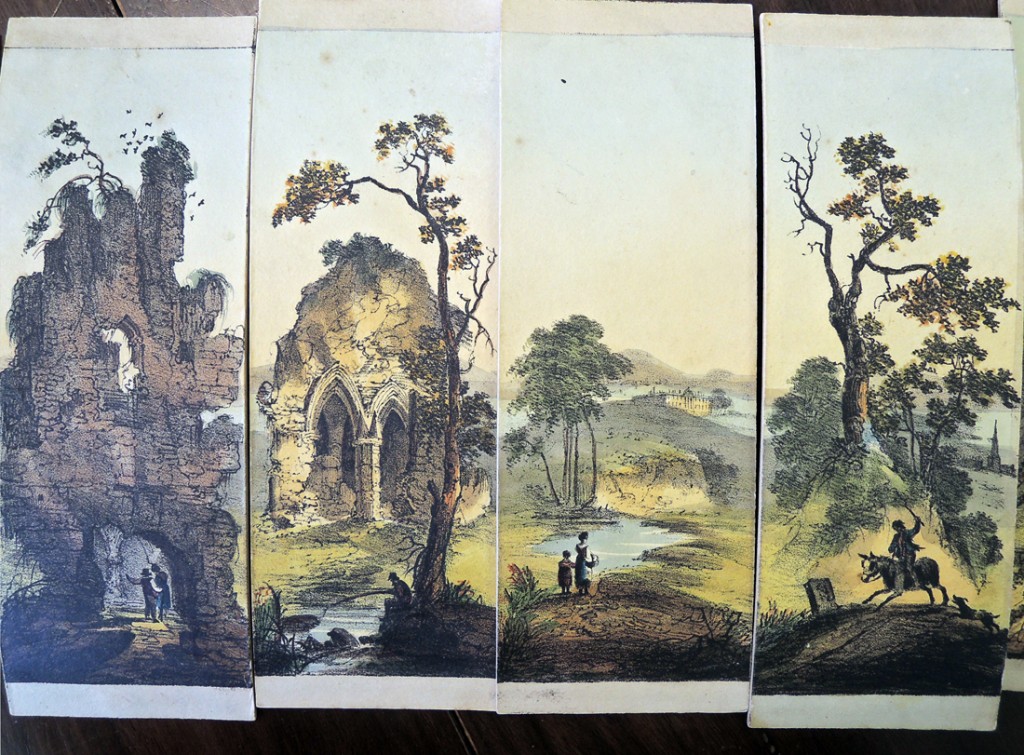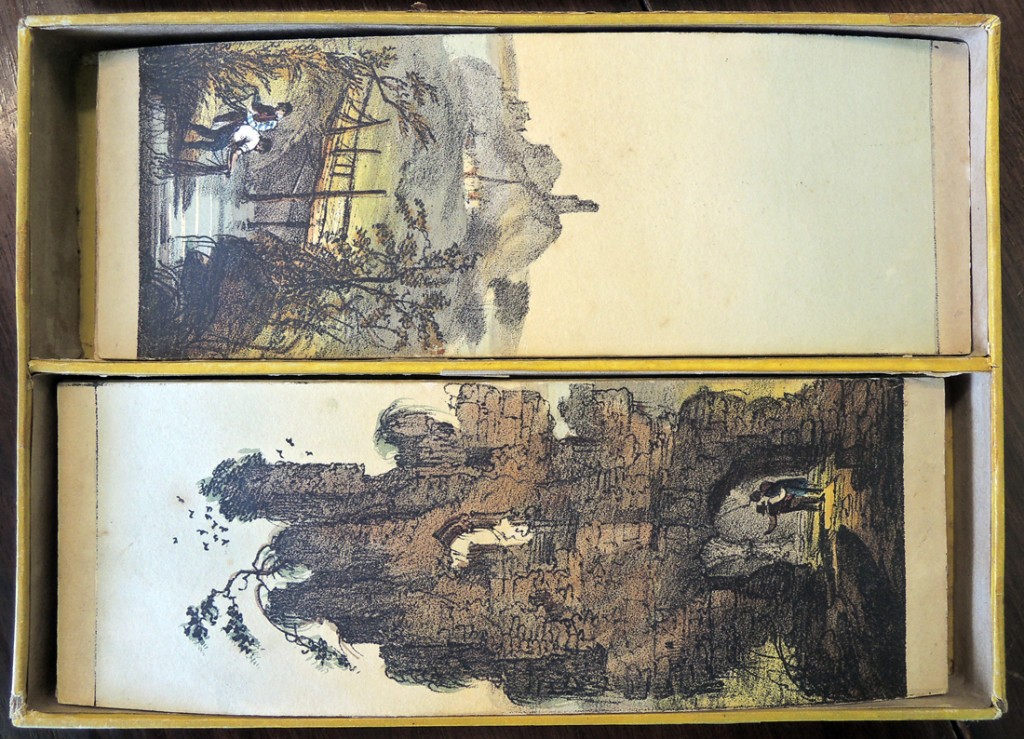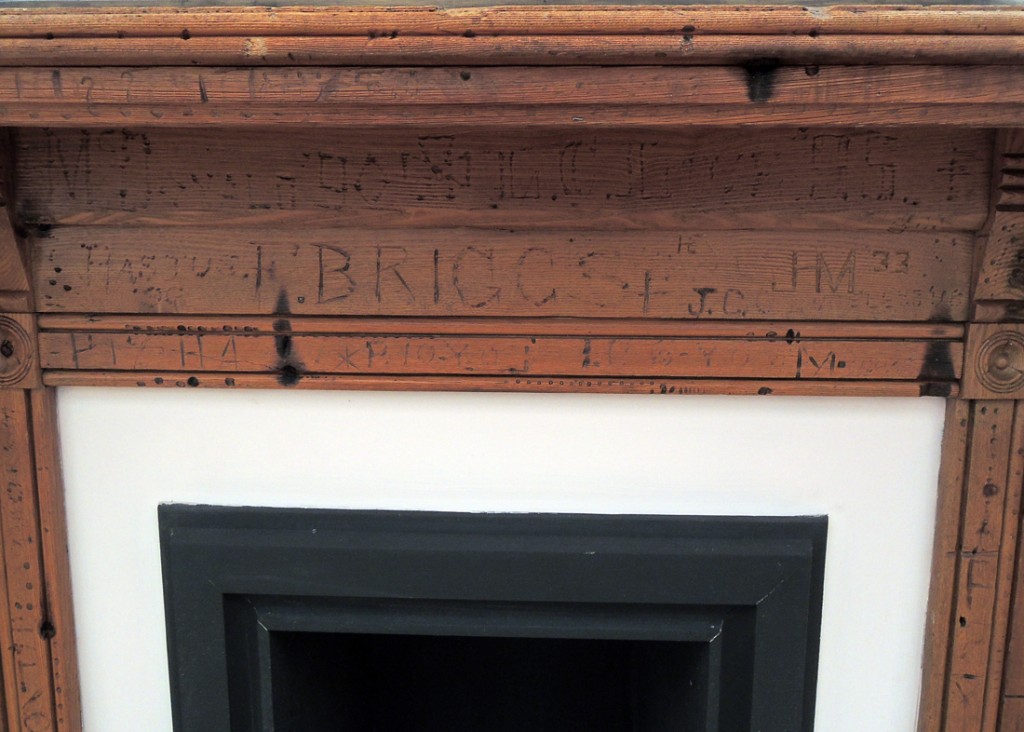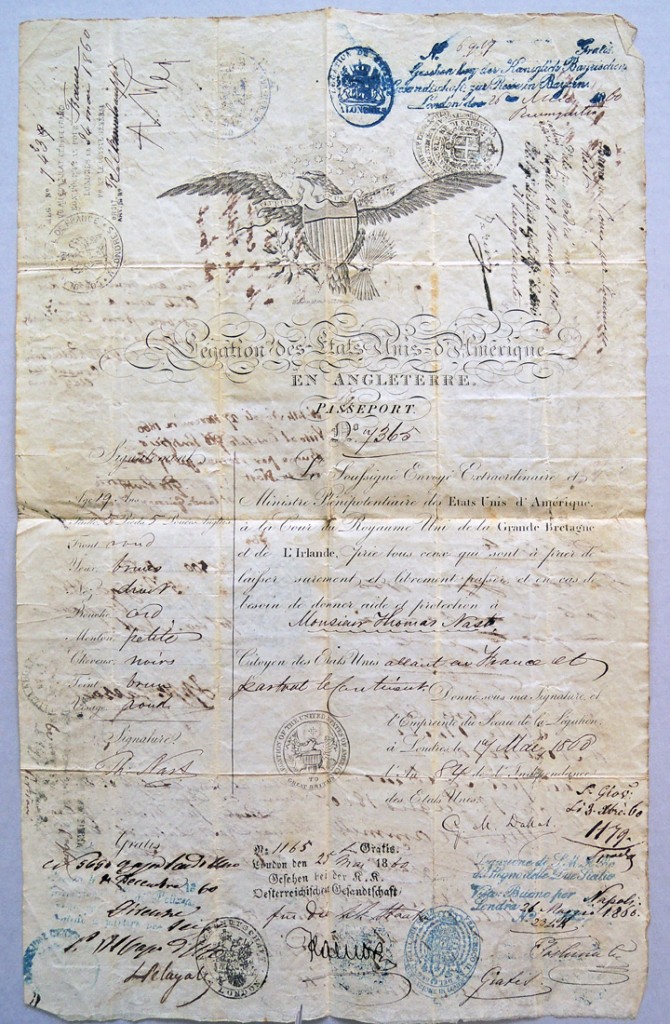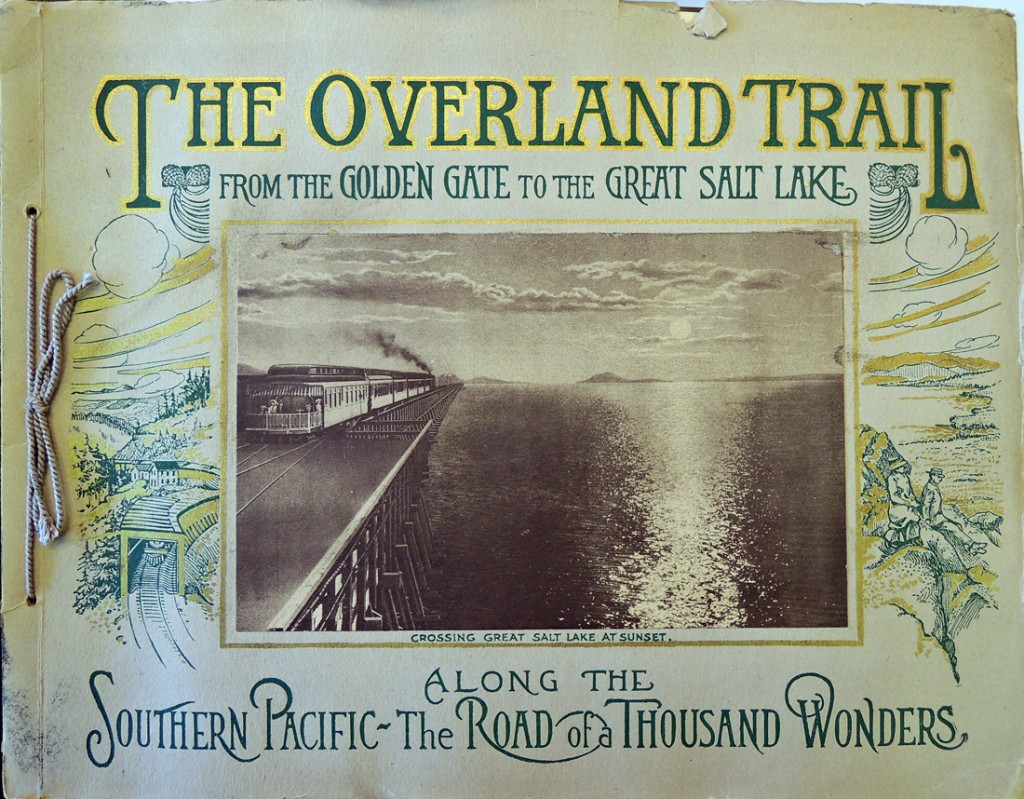 Nearly 100 souvenir travel books just turned up in the Graphic Arts Collection, most with pictorial covers and accordion bound images. Some have original photographs or photogravures. Many are no bigger than the palm of your hand. Here are a few examples.
Nearly 100 souvenir travel books just turned up in the Graphic Arts Collection, most with pictorial covers and accordion bound images. Some have original photographs or photogravures. Many are no bigger than the palm of your hand. Here are a few examples.

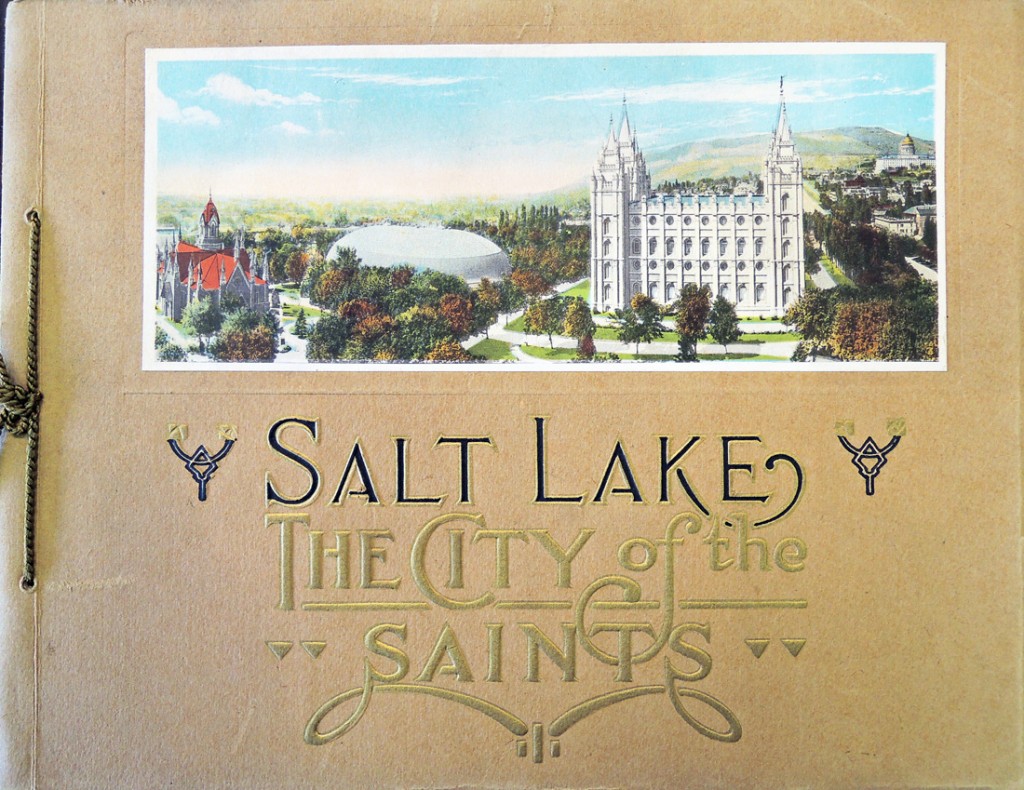
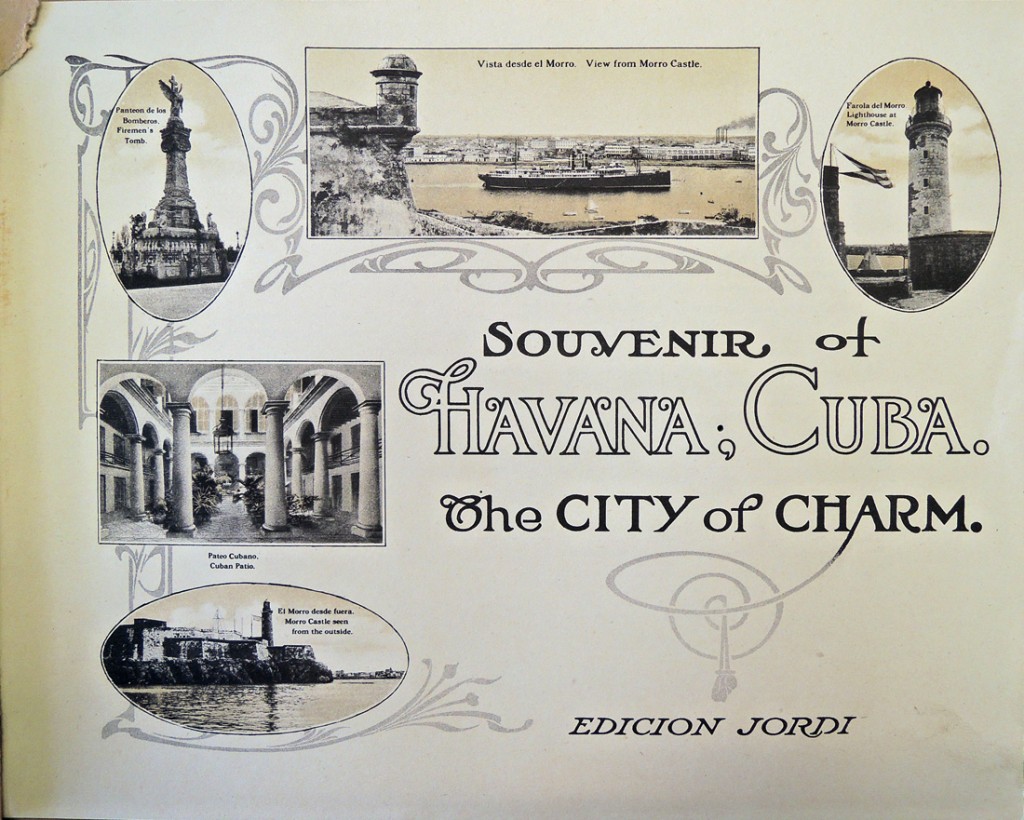
Category Archives: Ephemera
Playing Around the World
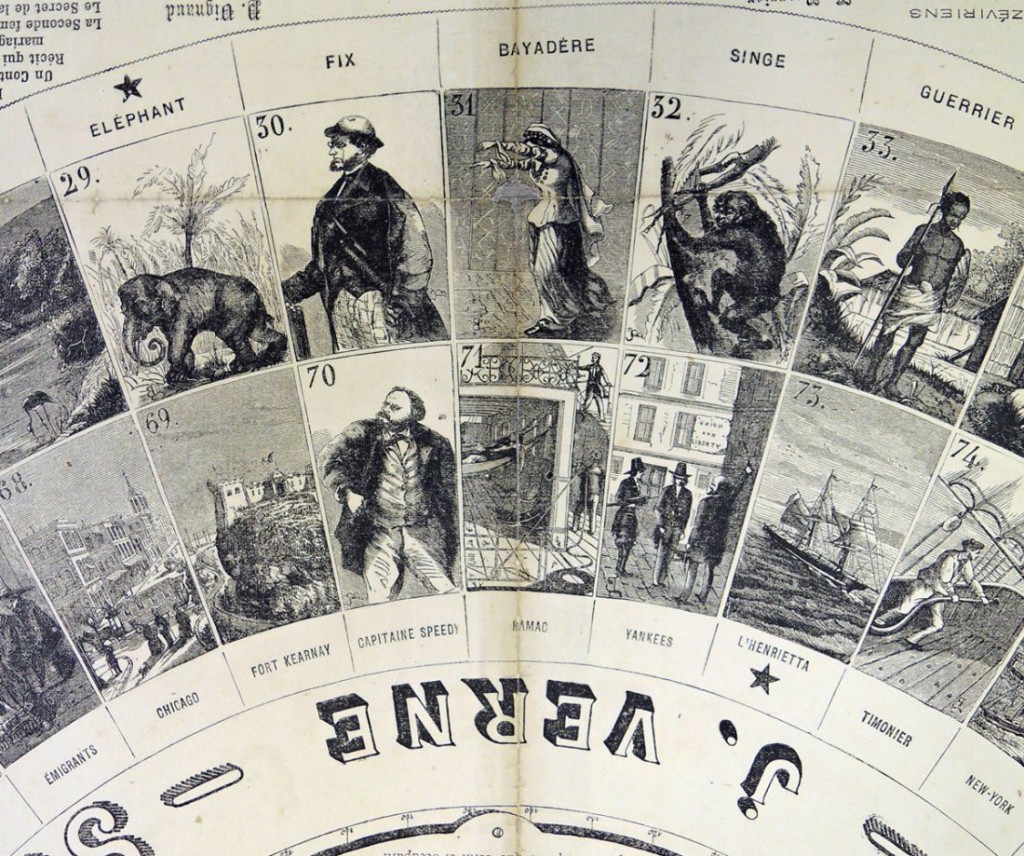
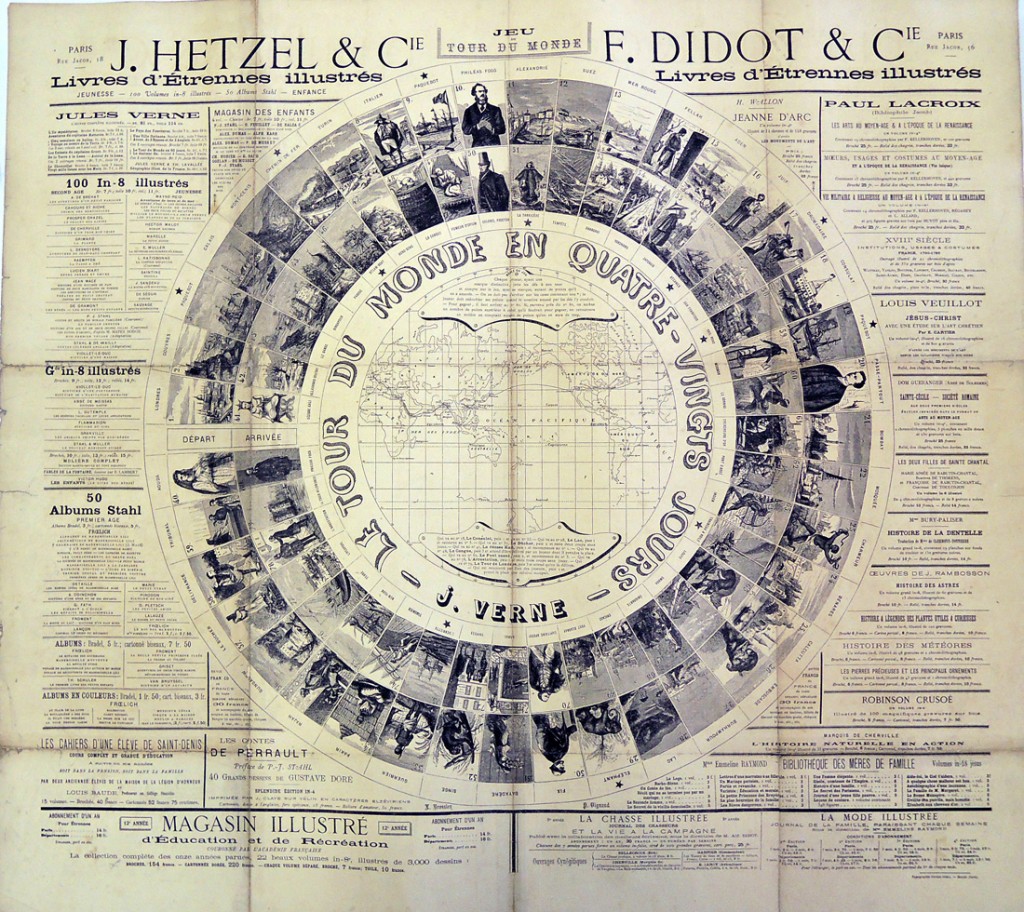 Jeu du Tour du Monde. Paris, J. Hetzel & F. Didot, [c.1875]. Letterpress and wood engraving. Graphic Arts Collection GAX 2015- in process
Jeu du Tour du Monde. Paris, J. Hetzel & F. Didot, [c.1875]. Letterpress and wood engraving. Graphic Arts Collection GAX 2015- in process
In 2011, the Graphic Arts Collection acquired a board game after the Jules Verne novel Around the World in 80 Days: https://blogs.princeton.edu/graphicarts/2011/01/around_the_world_and_around_th.html.
We recently acquired a publisher’s advertisement for that game in the form of a large printed broadside (75 x 68 cm,) mounted on linen. At the middle of the leaf is a circular version of the game (first published in 1873) although it was actually played in a continuous spiral that led to a center, winning cell. Here, the inside of the circle is filled with a map of the world, together with instructions and rules for the game.
Among other information the advertisements surrounding the game include subscription details for Hetzel’s Magasin Illustré d’Éducation et de Récréation, where Verne’s novels were first published in serial form.

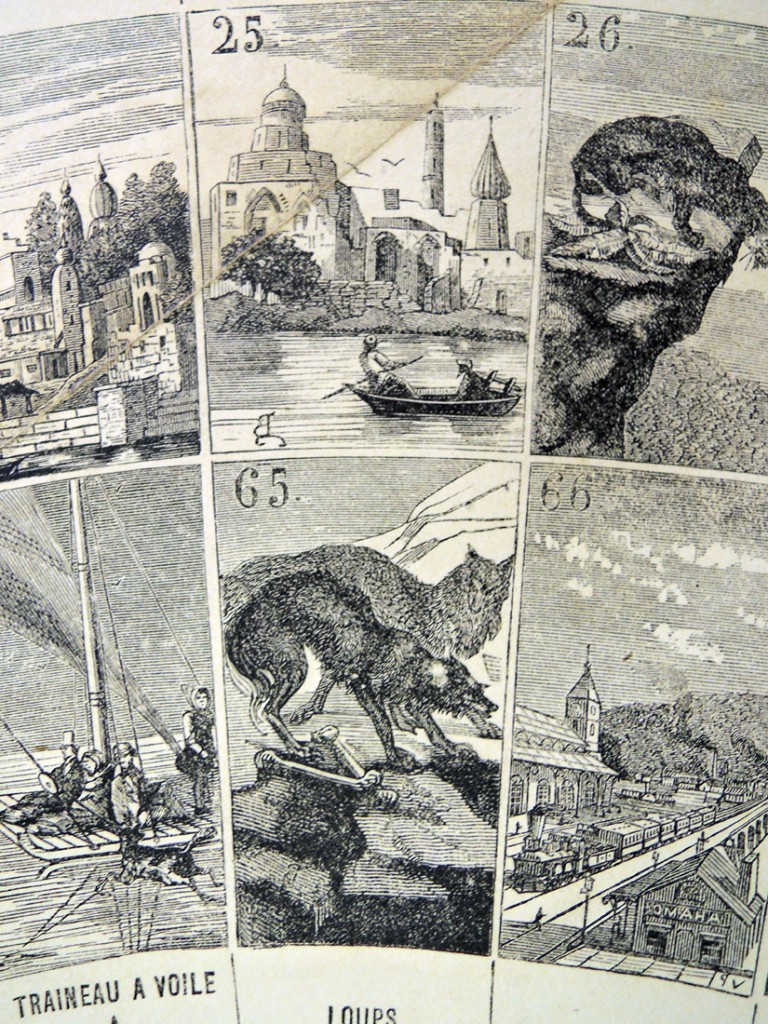
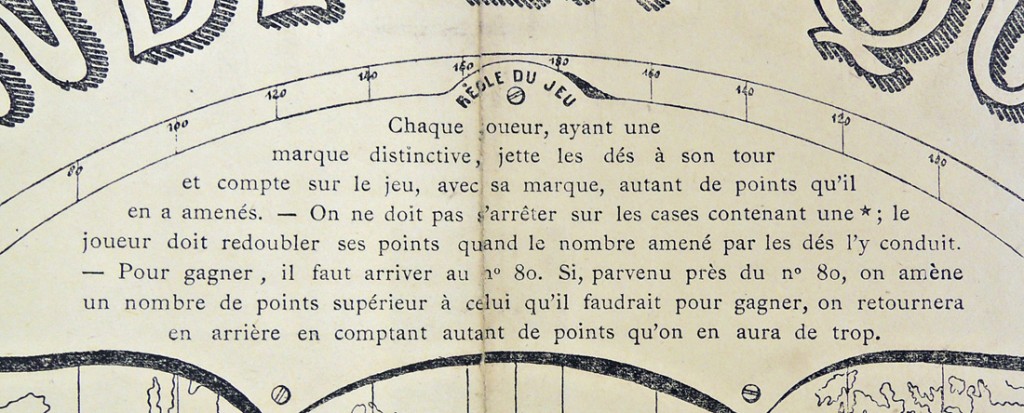
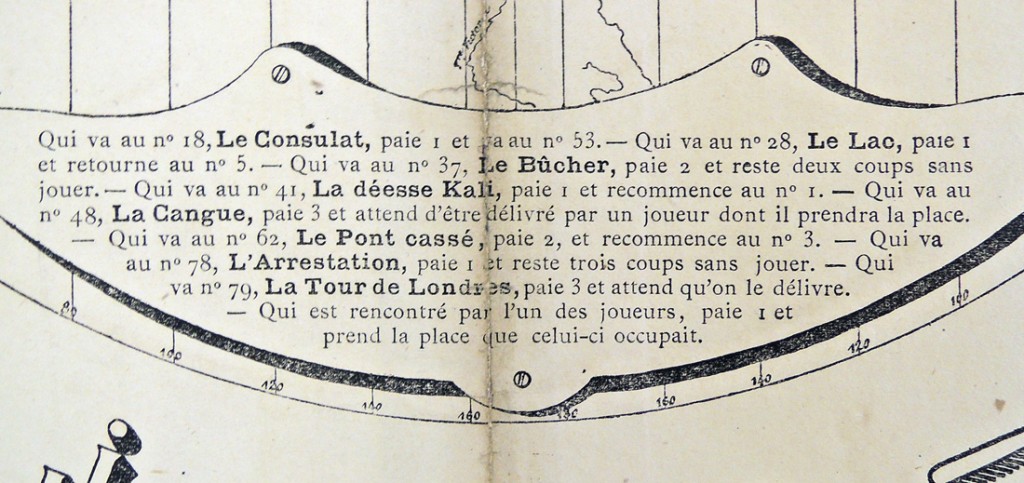
Fête Futuriste, a Cubist Costume Carnival
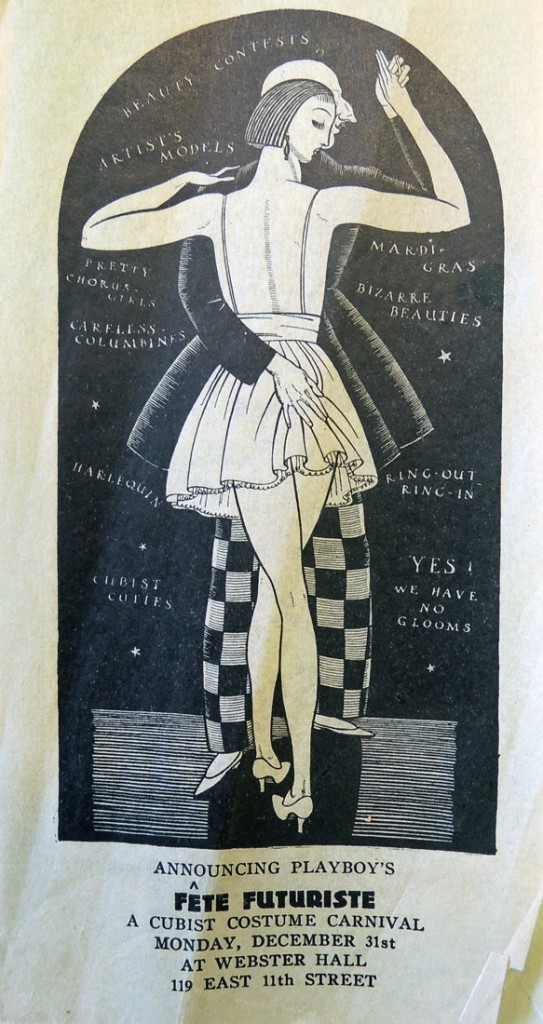
From 1917 to 1923, Egmont Arens managed the Washington Square Bookshop at 17 West 8th Street and then, 27 West 8th Street, where he also published Playboy A Portfolio of Art and Satire (Marquand 0901.725Q). From 1923, Playboy sponsored a New Year’s Eve costume party at Webster Hall: Fête Futuriste, a Cubist Costume Carnival, which continued on and off throughout the 1920s. This invitation could have been for 1923 or 1928, since in both New Years Eve fell on a Monday.
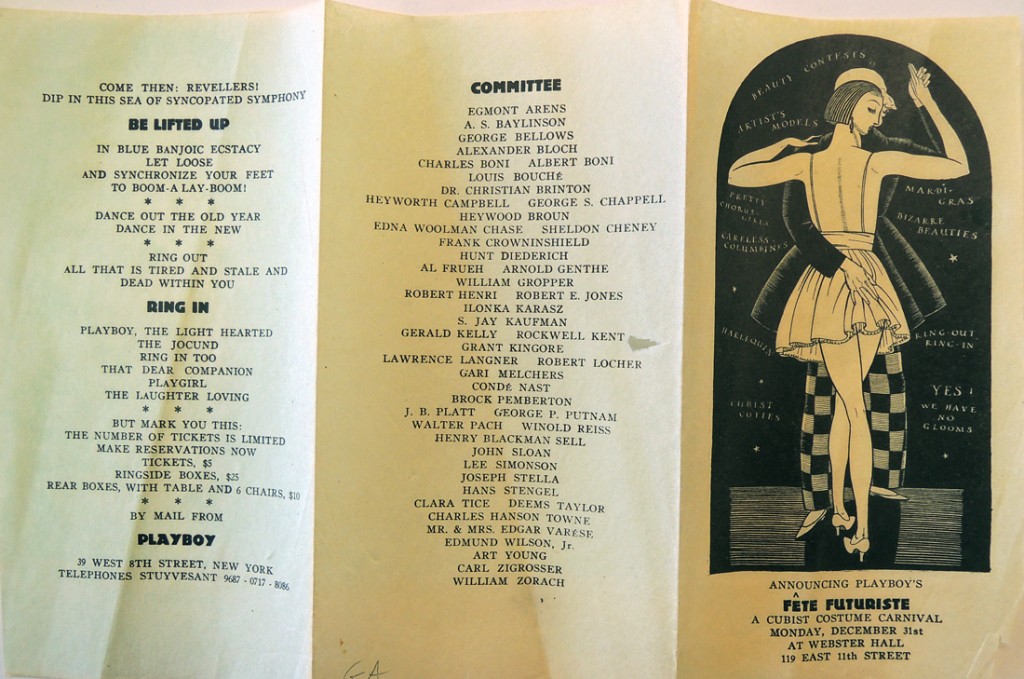
It is probably 1923 since the evening’s entertainment included a costume revue glorifying the negligees of 1924, with pajamas designed by Nat Lewis (the production opened on Broadway the following March). William Zorach is credited with the decoration of hall and Rockwell Kent helped with the advertising. John Sloan, George Bellows, and Joseph Stella joined Arens’ committee for both the Halloween and the New Year’s celebrations.
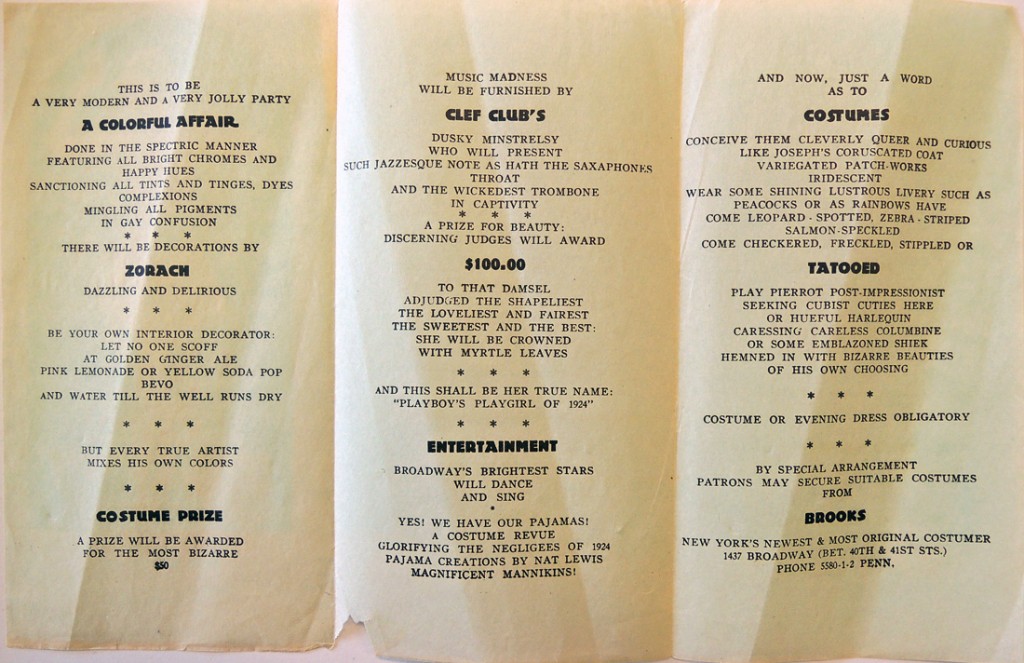 Playboy’s Fête Futuriste, a Cubist Costume Carnival, no date (1923?). Graphic Arts Collection
Playboy’s Fête Futuriste, a Cubist Costume Carnival, no date (1923?). Graphic Arts Collection
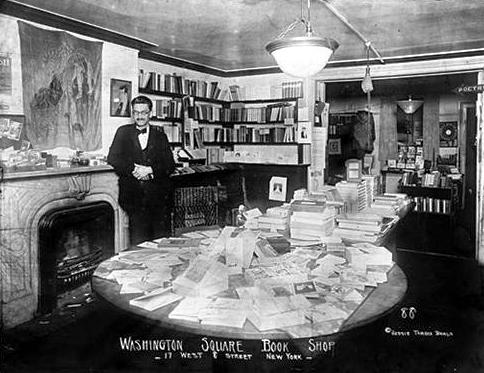 Jessie Tarbox Beals, Washington Square Bookshop, ca. 1918. Gelatin silver print. Museum of the City of New York.
Jessie Tarbox Beals, Washington Square Bookshop, ca. 1918. Gelatin silver print. Museum of the City of New York.
Paper fans
Pre-Columbian Stamp Seals and Roller Seals
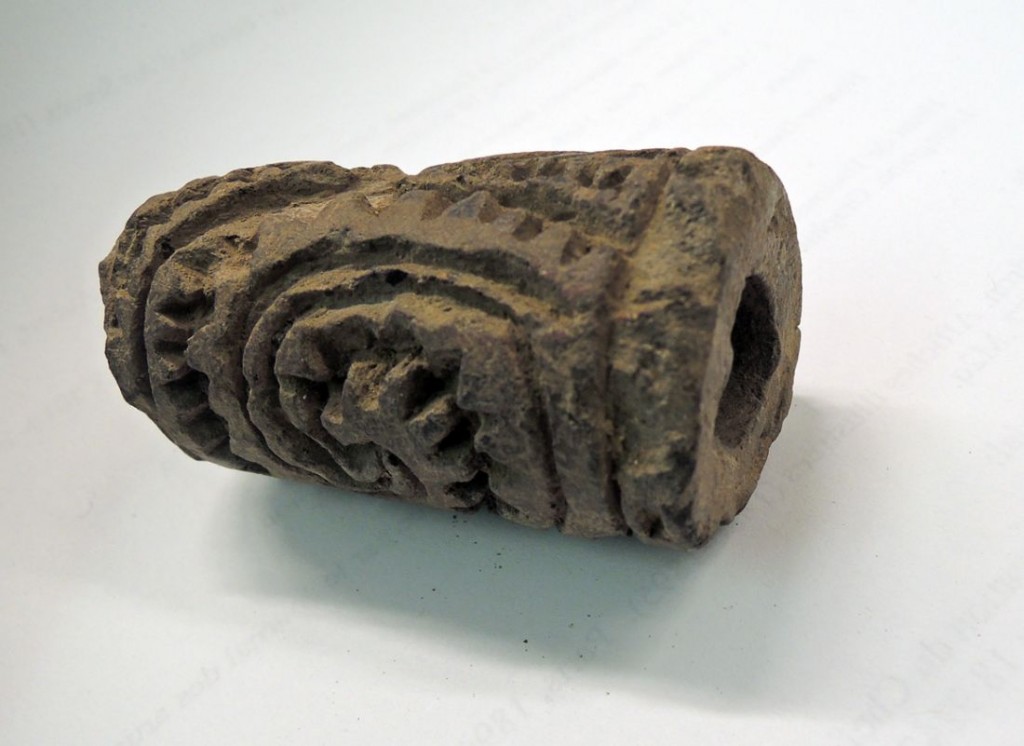
Just cleaning up for the end of the week and reshelving some of the stamp seals and roller seals that belong to: Pre-Columbian stamp seals and roller seals, no date [pre-1600]. Clay. Graphic Arts Collection. GC185. Gift of Gillett G. Griffin.
The collection consists of 147 clay stamp seals and roller or cylinder seals dating from the Pre-Columbian era and Post-Conquest until 1600 AD, chiefly from Mesoamerica but possibly from other places in the Americas. These seals (sellos) include anthropomorphic, zoomorphic, floral, and geometric designs, and were probably used to decorate fabric and/or the human body. Some of the stamps contain remains of pigments. They are organized in four boxes by type and numbered consecutively. The ones seen here are in box 4.
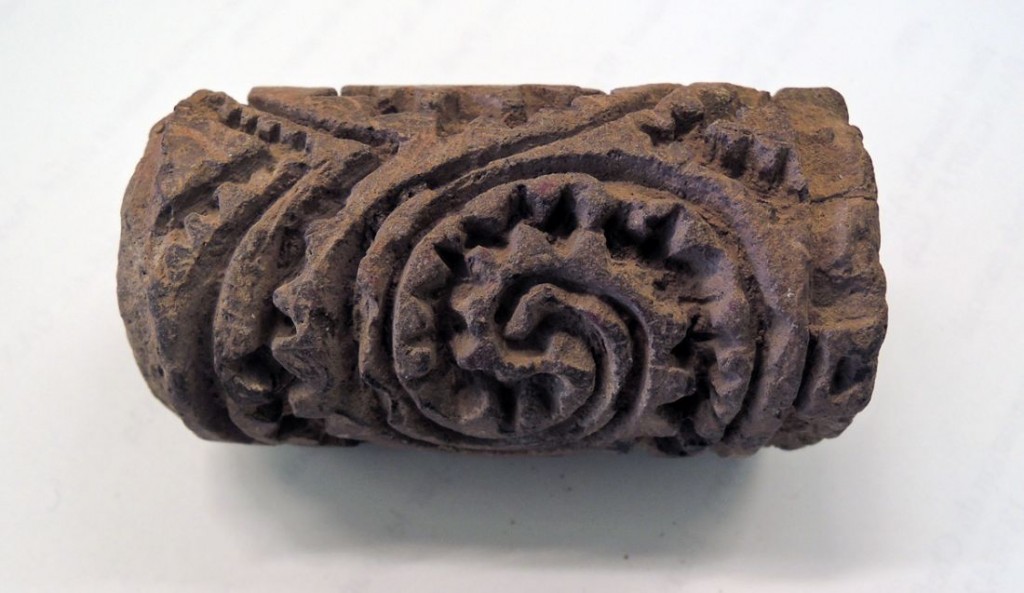

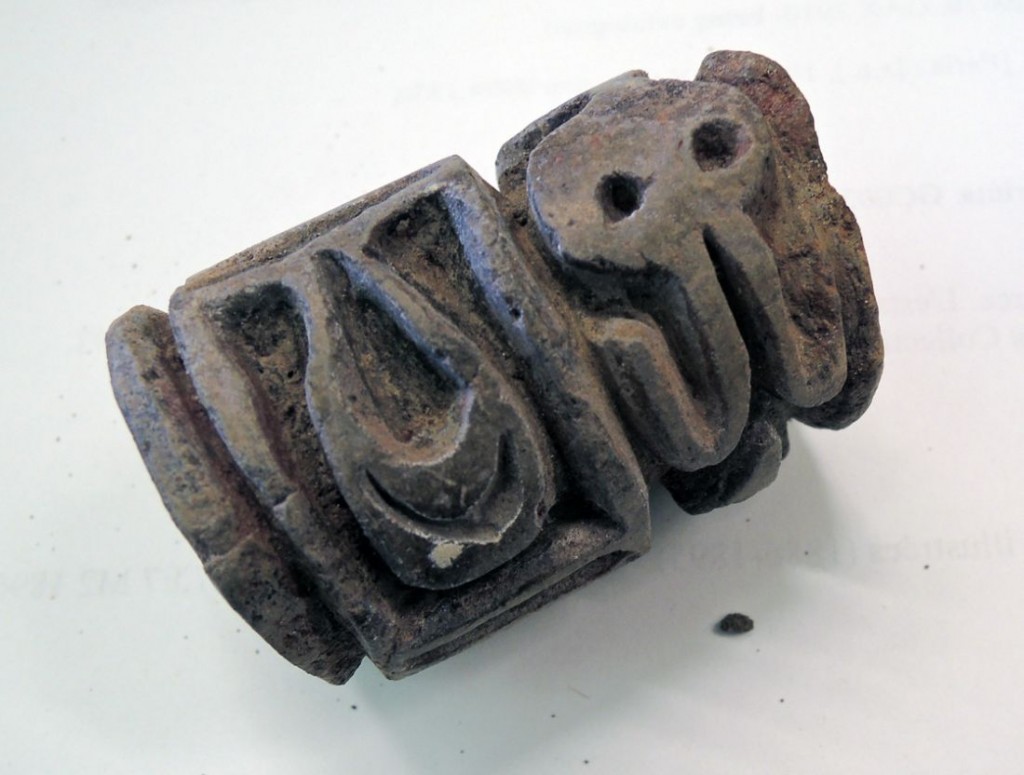
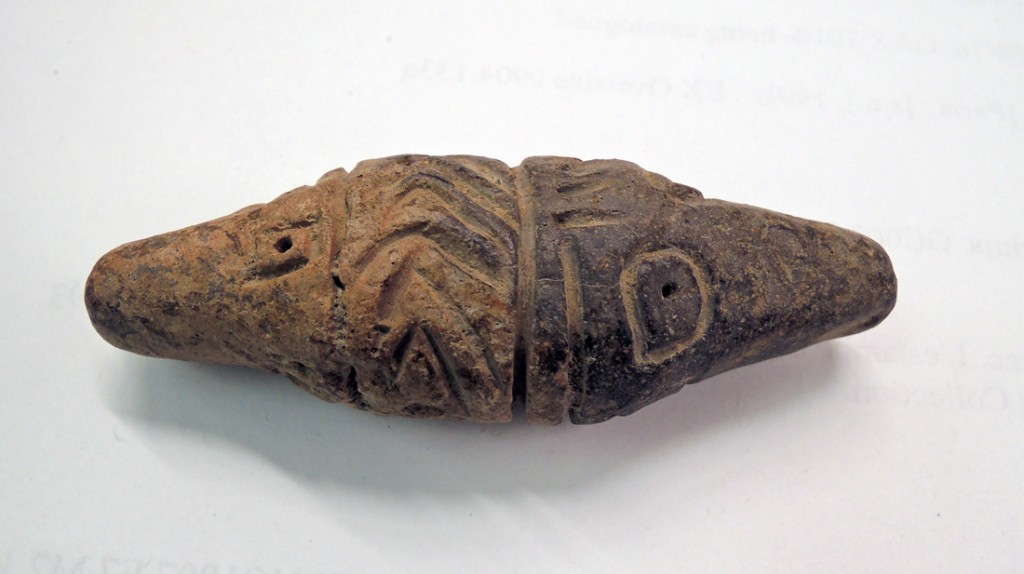 See also: Anthony Ortegon. Pre-Columbian stamp seals (Pueblo, Colo.: AOA Associates, 1999). Rare Books: Reference Collection in Dulles Reading Rm. (ExB) E59 .A7 1999
See also: Anthony Ortegon. Pre-Columbian stamp seals (Pueblo, Colo.: AOA Associates, 1999). Rare Books: Reference Collection in Dulles Reading Rm. (ExB) E59 .A7 1999
Polyorama or Endless Changes of Landscapes
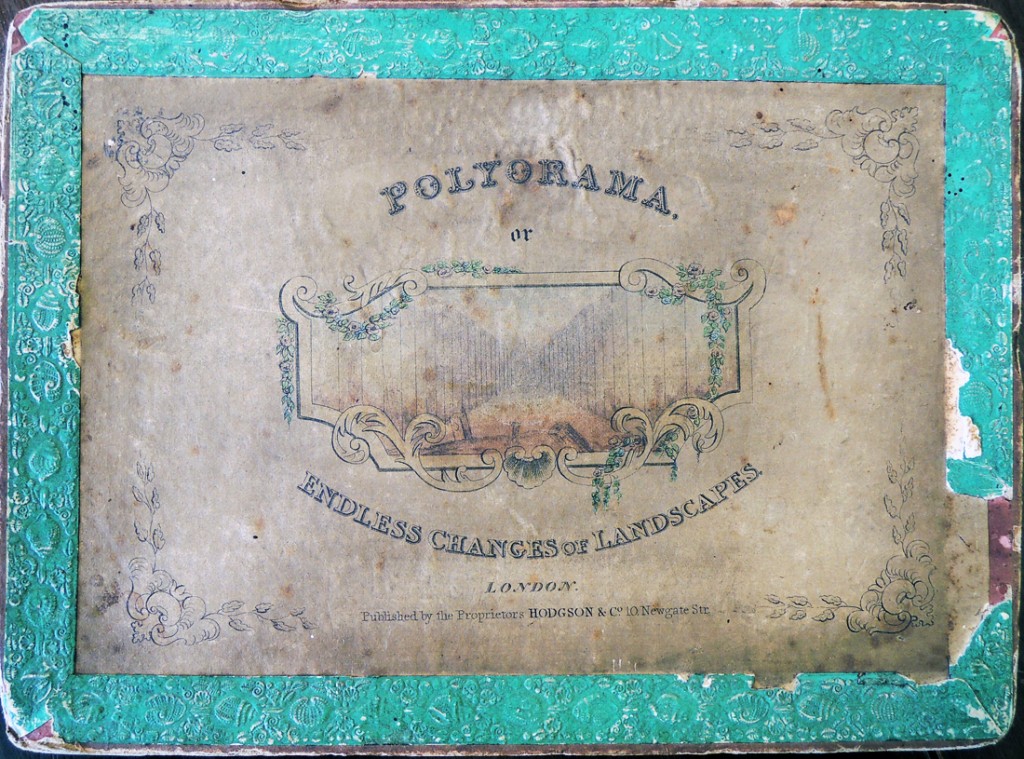
 Polyorama or, Endless changes of landscapes (London: Hodgson & Company, [ca. 1824]). 16 hand colored lithographed cards forming an interchangeable panoramic landscape view. Graphic Arts Collection 2015-in process
Polyorama or, Endless changes of landscapes (London: Hodgson & Company, [ca. 1824]). 16 hand colored lithographed cards forming an interchangeable panoramic landscape view. Graphic Arts Collection 2015-in process
‘The formulaic nature of the picturesque landscape had become, by the nineteenth century, a visual cliché, so much so that it was fashioned by John Clark into a children’s game called the Myriorama, a Collection of Many Thousand Landscapes in 1824. Clark followed this first Myriorama of English-like scenery with a second series composed of Italian scenery which made explicit the classical, Claudean antecedents of Gilpin’s picturesque formula. As the suffix ‘orama’ suggests, Clark saw his Myriorama as the domestic counterpart to those large-scale popular landscape amusements, the panorama and diorama.’ –Ann Bermingham, Learning to Draw: Studies in the Cultural History of a Polite and Useful Art (London: Paul MellonCentre, 2000): 107–08.
According to an advertisement in the Bristol Mercury of 17th May 1824, the views were by the Irish artist Frederick Calvert (c.1785–c.1845), who specialized in seascapes and landscapes, and later, also published a series of 39 plates depicting picturesque views of Staffordshire and Shropshire.
See also Ralph Hyde, “Myrioramas, Endless Landscapes: The Story of a Craze,” Print Quarterly, December 2004.
Henry Martin’s Fireplace
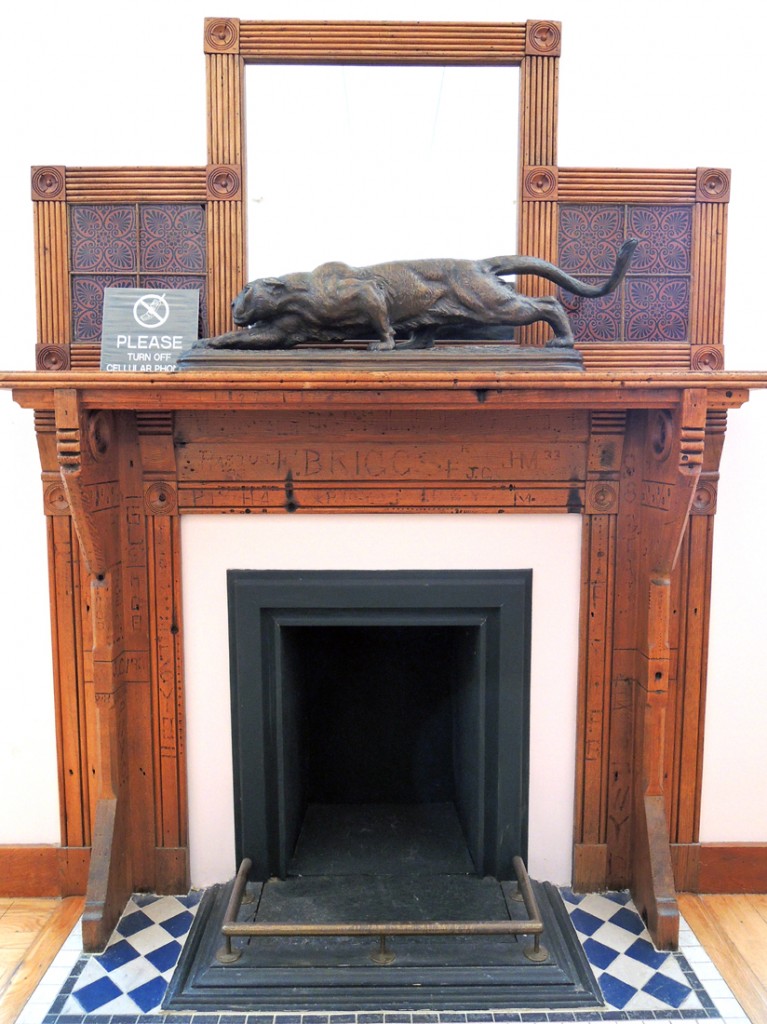
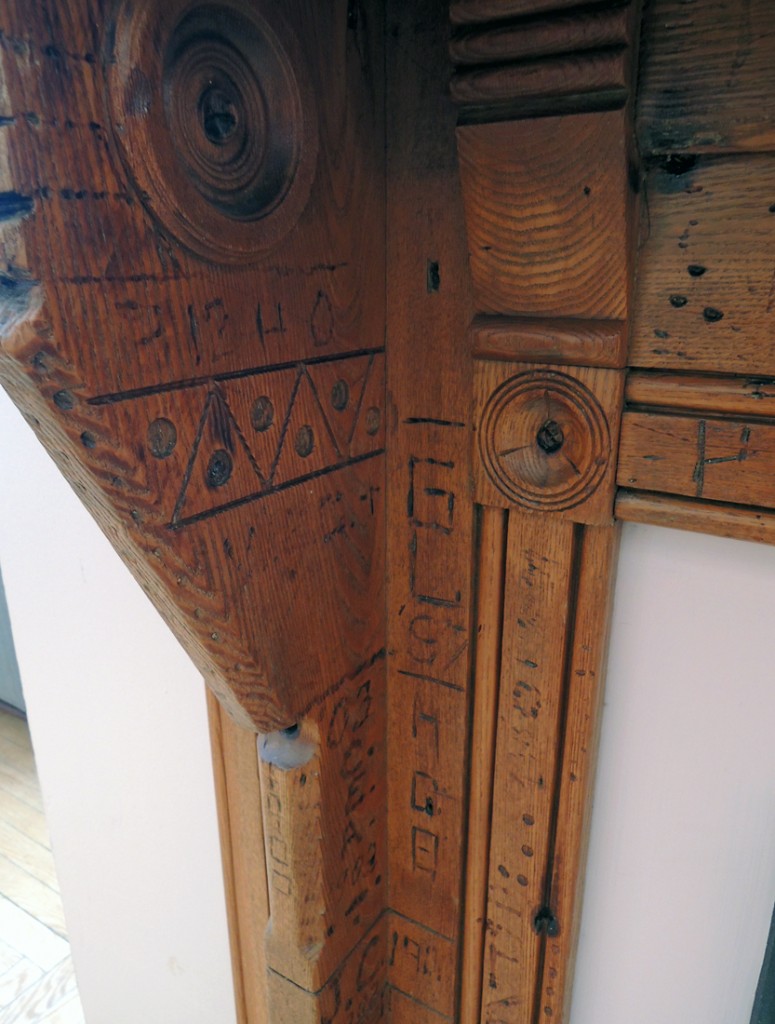 As an undergraduate, Henry Martin, Class of 1948 and former New Yorker cartoonist, lived in Witherspoon Hall. Some years later, while drawing in his William Street studio, Martin got a call from Fred Fox, Class of 1939 and Keeper of Princetoniana. Fox told him to come quickly and help save parts of Witherspoon before they were lost in an upcoming renovation. Martin did and somehow, managed to take home his dormroom’s fireplace complete with mantel and mirror.
As an undergraduate, Henry Martin, Class of 1948 and former New Yorker cartoonist, lived in Witherspoon Hall. Some years later, while drawing in his William Street studio, Martin got a call from Fred Fox, Class of 1939 and Keeper of Princetoniana. Fox told him to come quickly and help save parts of Witherspoon before they were lost in an upcoming renovation. Martin did and somehow, managed to take home his dormroom’s fireplace complete with mantel and mirror.
In 1982, Martin got another call asking if he had any objects for a “Princetoniana” room, which was being established in Firestone Library. Without hesitation, the generous artist put the fireplace back into the trunk of his car and drove it back to campus.
Today, most of the Princetoniana has been moved to Mudd Library for safe keeping but Martin’s fireplace remains in Firestone Library. Walk all the way to the back (Nassau Street side) of the first floor and take a look.
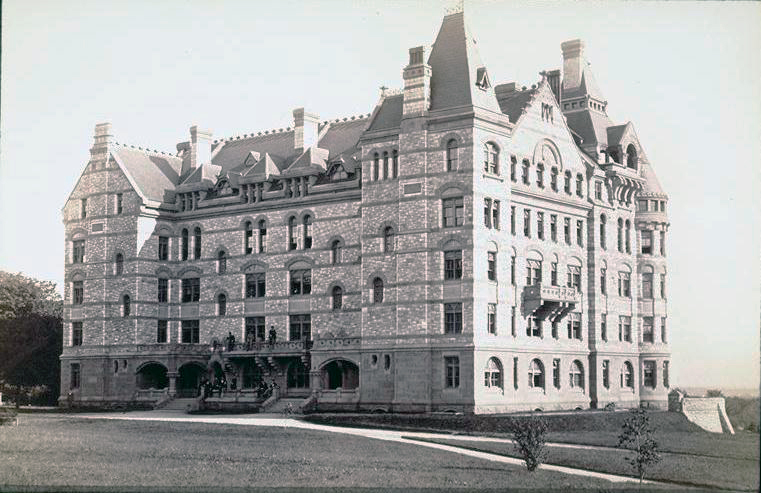 “Named for Princeton’s sixth president, Witherspoon was designed in 1877 by William Appleton Potter and his partner Robert Henderson Robertson in a mix of High Victorian Gothic and then-nascent Richardsonian Romanesque architecture (a style that would be more fully realized in Potter’s Alexander Hall).
“Named for Princeton’s sixth president, Witherspoon was designed in 1877 by William Appleton Potter and his partner Robert Henderson Robertson in a mix of High Victorian Gothic and then-nascent Richardsonian Romanesque architecture (a style that would be more fully realized in Potter’s Alexander Hall).
For 20 years (until the erection of Blair Hall), Witherspoon’s imposing edifice formed the campus’ southwestern boundary and was the first sight of the University for anyone arriving by train. Today, after two complete interior renovations, Witherspoon Hall remains Princeton’s oldest dormitory that is still used to house students.”
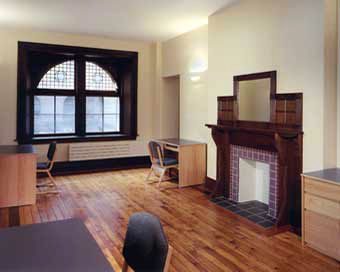 Contemporary view inside Witherspoon Hall where a few fireplaces remain.
Contemporary view inside Witherspoon Hall where a few fireplaces remain.
John Girtin’s copper plates stolen
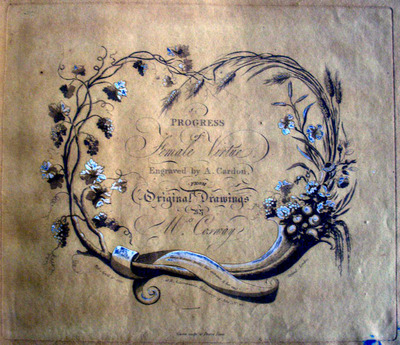
Maria Hadfield Cosway (1759-1838), Progress of female dissipation, engraved by A. Cardon (title leaf by John Girtin) (London: R. Ackermann’s Repository of Arts, 1800). Graphic Arts Collection (GA) Oversize 2005-0257Q
Recorded in the Proceedings of the Old Bailey, 1674-1913, copper plates belonging to the engraver John Girtin were stolen on December 8, 1807 by Richard Wells. The following is a transcription of the trial:
JOHN GIRTIN. Q. What are you. – A. I am an engraver and printer.
Q. On the day of the indictment, did you employ your boy to bring some copper plates from the City to your house. – A. Yes, to No. 8, Charles-street, Middlesex hospital; it was on the 8th of December.
JOHN BANYARD. Q. Are you errand boy to the prosecutor. – A. I am. On the 8th of December, I went in the city to get some plates to carry to my master’s house; I got thirteen plates in the City, about six o’clock in the evening; when I got into Holborn, just by Red Lion-street, the prisoner asked me which was Oxford-road; I told him I was going to Oxford-road, I would shew him; he asked me to let him carry the plates; I delivered them to him; as soon as we got a little way up Holborn, I asked him where the plates were; he said he had got them under his coat; I asked him to give them to me, he said he would not, he would carry them a little farther for me; when I came to Southampton-street, I told him I was going up that way; he said, so am I; as soon as we got up a few doors in Southampton-street, he said, there are your plates, he fell down then he got up and ran away.
Q. Were your plates on the ground. – A. No; I cried stop thief, he was pursued and taken by Mr. Carpmeal; I never lost sight of him from the time he stumbled till the time he was taken; I was close to his heels. There was no plates found on him. There was a man walking close by the side of the prisoner as we were going up Holborn; I lost sight of that man.
Q. Had you an opportunity of seeing whether the prisoner gave the plates to any body. – A. No, the plates have never been found.
Court. When you gave him the plates how did he carry them. – A. Under his arm. I missed them from under his arm; then he said he had got them under his coat.
Q. Have you any doubt the prisoner at the bar is the man. – A. I am sure he is the man.
JAMES CARPMEAL. Q. In consequence of hearing the cry of Stop Thief, did you apprehend the prisoner. A. I assisted; he was running; I apprehended him two doors from Little Queen-street, Holborn; the boy was close to his heels. There was nothing found upon him but three pair of upper leathers, belonging to some shoemaker.
THOMAS FOSSIT. Q. Did you assist in stopping the prisoner. – A. I stopped him; the boy was close to his heels.
The prisoner left his defence to his counsel; called two witnesses, who gave him a good character.
GUILTY, aged 29. Transported for Seven Years.
Jamaica Rebellion broadside
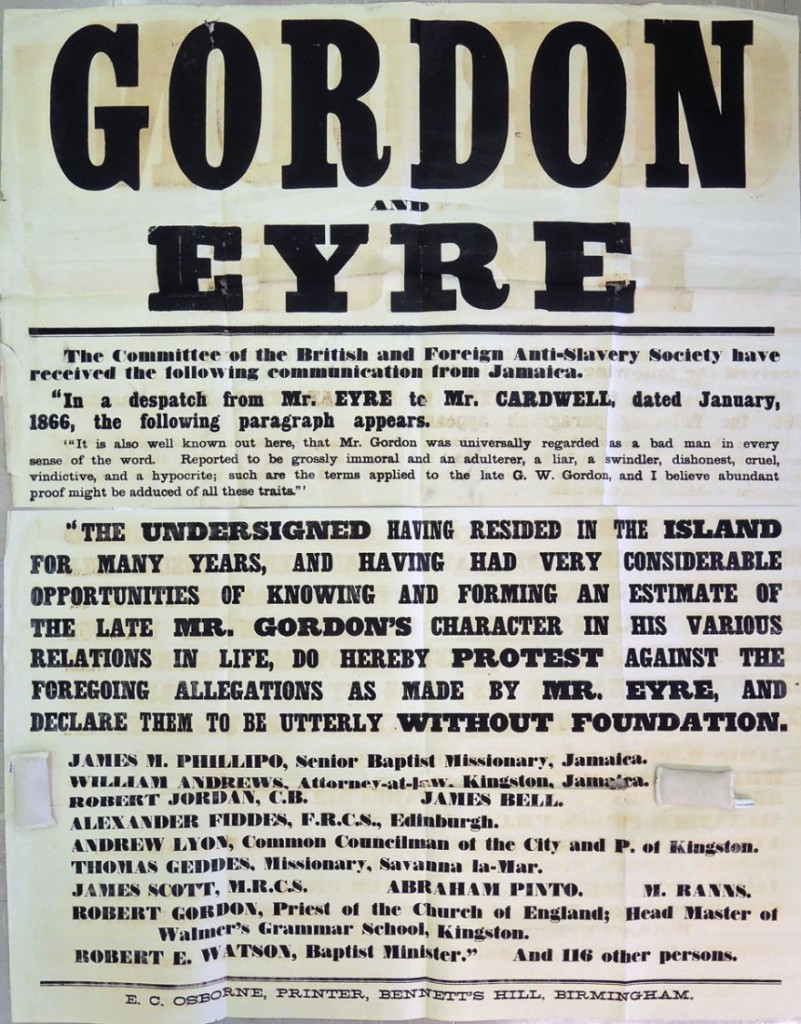 In 1976, the Bank of Jamaica issued a new $10 note featuring George William Gordon (1820-1865) on the bill. Gordon, who was hanged following the October 11, 1865 insurrection known as the Morant Bay Rebellion, was finally being recognized as a patriot and a national hero.
In 1976, the Bank of Jamaica issued a new $10 note featuring George William Gordon (1820-1865) on the bill. Gordon, who was hanged following the October 11, 1865 insurrection known as the Morant Bay Rebellion, was finally being recognized as a patriot and a national hero.
Many appreciated his work at the time. On December 26, 1865 The New York Daily Tribune ran the headline “George William Gordon, the Jamaica Martyr.” The article began, “In the person of the late George William Gordon, Jamaica has just added another name to the list of those who have sealed their devotion to liberty with their lives; another victim to the accursed spirit of negro Slavery.”
Gordon was the son of a Scottish plantation owner and one of his slaves. The self-educated businessman joined the Jamaica House of Assembly and became an advocate for social reform in Jamaica. Although not directly involved in the Morant Bay events, Gordon was arrested and convicted of inciting the riot. He was hanged on October 23 of that year.
Edward John Eyre (1815-1901) was an English land owner and the Governor of Jamaica who called for Gordon’s arrest. Eyre was himself later tried for his part in the rebellion and subsequent murders.
This enormous broadside, 139 x 109 cm (4’ 7” x 3’ 7”) denouncing Eyre was issued in 1866 by the Committee of the British and Foreign anti-Slavery Society and printed in Birmingham, England, by E.C. Osborne. It reads:
“Gordon and Eyre. The committee of the British and Foreign Anti-Slavery Society have received the following communication from Jamaica. “In a dispatch from Mr. Eyre to Mr. Cardwell, dated January, 1866, the following paragraph appears. ‘It is also well known out here, that Mr. Gordon was universally regarded as a bad man in very sense of the word. Reported to be grossly immoral and an adulterer, a liar, a swindler, dishonest, cruel, vindictive, and a hypocrite; such are the term applied to the late G. W. Gordon, and I believe abundant proof might be adduced of all these traits.’ We the undersigned having resided in the island for many years, and having had very considerable opportunities of knowing and forming an estimate of the late Mr. Gordon’s character in his various relations in life, do hereby protest against the foregoing allegations as made by Mr. Eyre, and declare them to be utterly without foundation …” [followed by the names and residences of 12 respectable citizens of Jamaica].
This is the only recorded copy of the broadside in the United States. For a photographic record of the Jamaica rebellion, see: http://pudl.princeton.edu/objects/736664580
Thomas Nast’s Passport
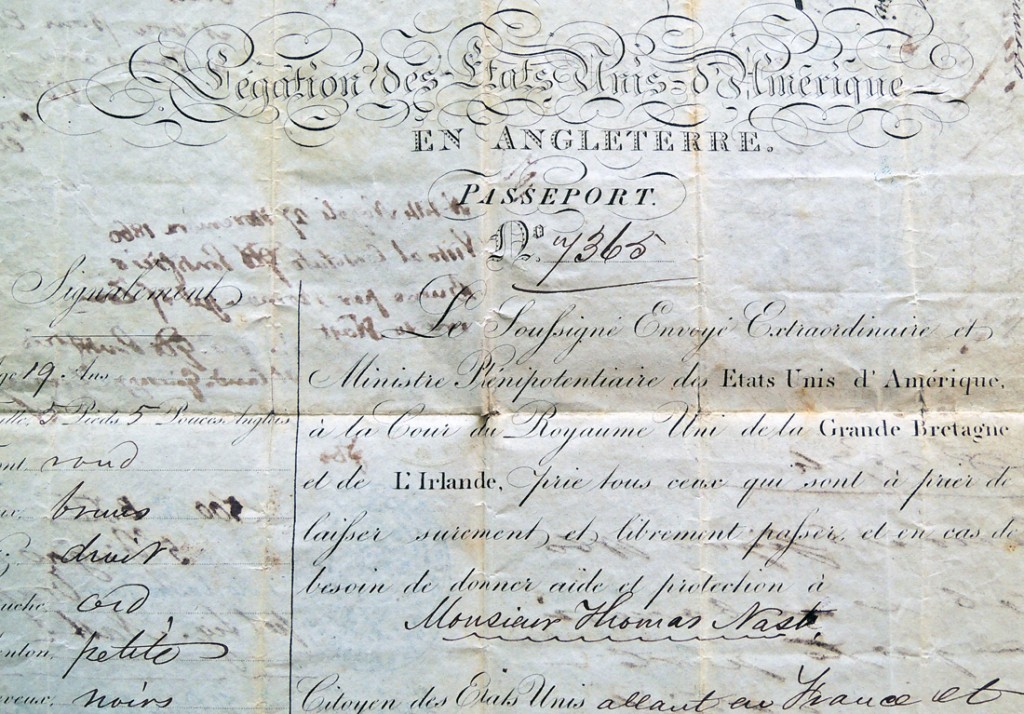
Passport no.7365 belonging to Thomas Nast (1840-1902), 17 x 10 ½”, signed by G[eorge] M. Dallas, and issued to “Monsieur Thomas Nast” by the “Légation des Etas Unis d’Amérique”, granting him permission to travel “allant en France et partout le Continent.” London, 17 May 1860. Graphic Arts Collection GA2015- in process
The American artist Thomas Nast was nineteen years old when he was issued this passport, signed by former United States Senator and former Vice-President, George M. Dallas (1792-1864), then serving as Minister to the Court of St. James. At that time, passports included a physical description of the passport holder since no photograph was yet attached. Nast is described as a diminutive lad, 5’5” tall, with a round body, a round face, brown eyes, small chin, straight nose, brown complexion, and black hair.
Our thanks go to the antiquarian dealer Rusty Mott, who somehow read through the entire document, which is covered with stamps and signatures on both sides. Mott records authorizations for travel to Great Britain, France, Germany, and Italy, including stops in London, Genoa, Turin, Florence, Naples, Palermo, Rome, and Trapani, Sicily. Besides Dallas, the American officials represented by their signatures and stamps include Alexander Hammett of Maryland, who for 52 years, from 1809 to 1861, represented the United States in Naples; W. L. Patterson, American consul at Genoa; and Henry H. Barstow (1823-1875), at Palermo.
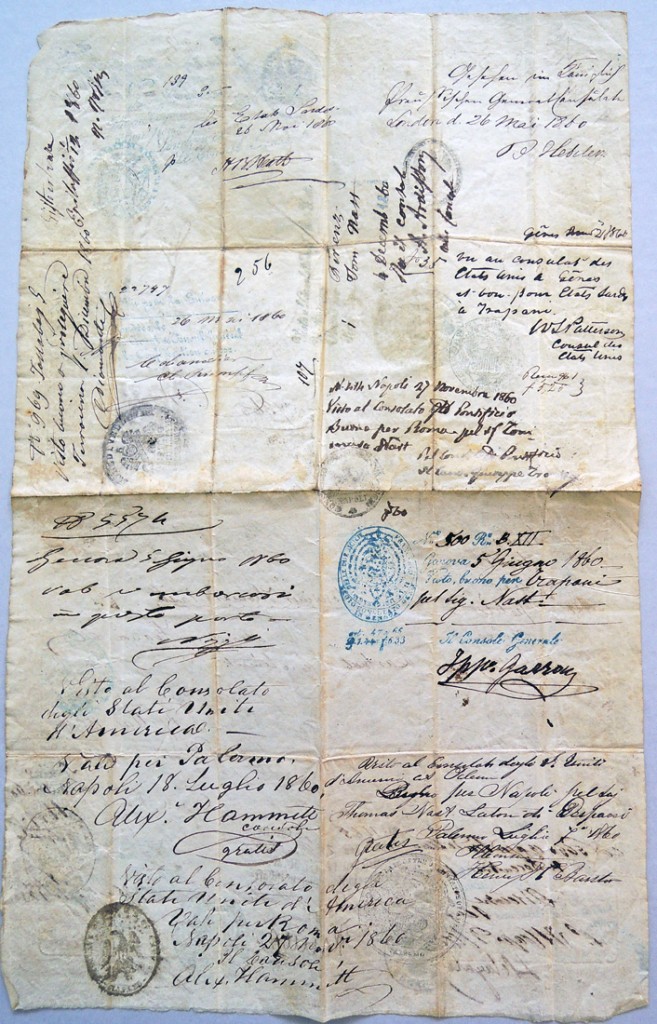
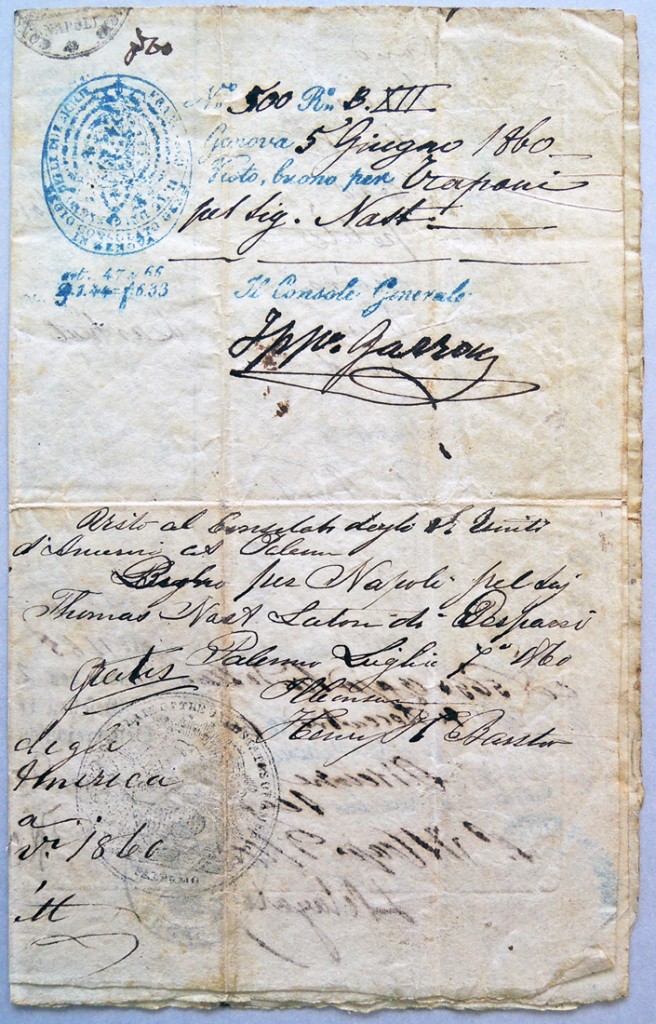
In 1859, Nast was hired by the New York Illustrated News but this passport was issued on 17 May 1860 so he could travel to Sicily representing The Illustrated London News and report on Giuseppe Garaibaldi’s military campaign to unify Italy. Mott notes that “Nast had not been paid by his employer, and had no money to make his Italian trip until Heenan, the American pugilist, lent him the necessary funds. Nast followed Garibaldi from Sicily to Naples, right through the battle of Volturno, October 1-2, and his articles and illustrations covering the war captured the American imagination.”
“He left Italy on Friday, November 30, 1860, making his way north to Germany, with stops in Florence, Milan, Genoa, on through Switzerland, to his boyhood home in Bavaria (hence the November and December authorizations), then back to London. He sailed for New York on January 19, 1861.”
For the Graphic Arts Collection of Thomas Nast prints and drawings, see http://pudl.princeton.edu/collections/pudl0039

